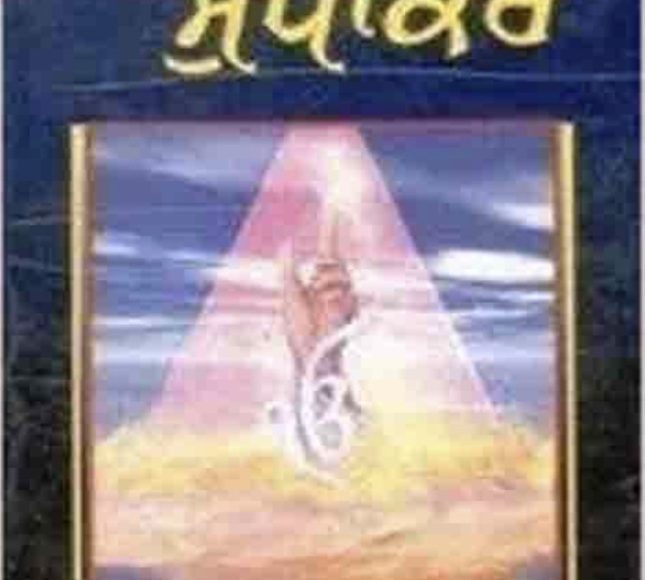GURMAT SUDHAKAR (lit. Sikh principles explained and illustrated: Sudhakaar = the moon, i.e. the illuminator) is an anthology by Bhai Kahn Singh Nabha, comprising excerpts from old Sikh historical texts and manuals of stipulated conduct. The work, first published in 1899, is divided into sixteen chapters. The opening chapter comprises verses from Guru Gobind Singh, the second from Bhai Gurdas, and the third passages from the Janam Sakhi of Bhai Bala. The fourth chapter is culled from Gurbilas Chhevin Patshahi. Chapter five is based on Var 1 from Bhai Gurdas. Chapter six repeats the commentary on Var XI of Bhai Gurdas. Chapters seven and eight contain the sayings of Bhai Nand Lal and of Bhai Desa Singh. The ninth chapter summarizes the book Prem Surname. Chapters ten and eleven present sayings from the Rahildama of Bhai Chaupa Singh and the sayings of Bhai Daya Singh. Chapter twelve contains verses from Sri Gur Sobia of Sainapati, poet contemporary of Guru Gobind Singh. Chapter thirteen offers excerpts from the famous historical text, the Panth Prakash. Chapters fourteen and fifteen consist of sayings from Guru Gobind Singh, and chapter sixteen reproduces verses from Guru Nanak Prakash and Sri Gur Pratap Suraj Granth. These extracts from old Sikh sources are heavily annotated. Each work is appropriately introduced at the beginning of each chapter. The book remained out of print for many years until it was reprinted in recent years (1970) by the Languages Department, Punjab
Gurmat Sudhakar: An Anthology Illuminating Sikh History and Principles—a seminal work that weaves together the rich tapestry of Sikh historical texts, doctrinal manuals, and prescribed conduct through a meticulously annotated compilation.
Historical Context and Purpose
Compiled by Bhai Kahn Singh Nabha and first published in 1899, Gurmat Sudhakar emerged during a period of both introspection and consolidation within the Sikh community. At a time when preserving and standardizing Sikh tradition was paramount, this anthology was designed not only as a repository of revered texts but also as a guide to interpreting the core principles of Sikhism. The term “Sudhakar” (meaning “the moon” or “illuminator”) aptly captures the work’s intent—to shed light on the intricate aspects of Sikh theology and history by uniting diverse sources under one scholarly umbrella .
Structure and Contents
Divided into sixteen chapters, the anthology showcases a fascinating interplay of voices from Sikh history and literature. Each chapter draws from different revered sources, offering both a depth of historical grounding and a spectrum of theological insights:
Chapter 1: Begins with verses from Guru Gobind Singh, setting a tone of spiritual authority and martial valor.
Chapter 2: Presents passages from Bhai Gurdas, whose writings are pivotal in shaping Sikh doctrinal thought.
Chapter 3: Draws from the Janam Sakhi of Bhai Bala, enlivening the narrative of Guru Nanak’s life.
Chapter 4: Is culled from Gurbilais Chhevin Patshahi, a lesserknown but rich source of Sikh spiritual lore.
Chapter 5: Revisits Var 1 from Bhai Gurdas, reinforcing foundational themes in Sikh philosophy.
Chapter 6: Repeats the commentary on Var XI of Bhai Gurdas—ensuring continuity and depth.
Chapters 7 and 8: Contain the sayings of Bhai Nand Lal and Bhai Desa Singh, whose reflections provide nuanced perspectives on ethics and devotion.
Chapter 9: Offers a summary of the book Prem Surname, reflecting on the transformative power of love in the Sikh context.
Chapters 10 and 11: Feature sayings from the Rahitnama of Bhai Chaupa Singh and from Bhai Daya Singh, contributing further to the anthology’s diverse voices.
Chapter 12: Contains verses from Sri Gur Sobia of Sainapati, a poet contemporary to Guru Gobind Singh, thereby bridging historical timelines.
Chapter 13: Offers excerpts from the famed historical text, Panth Prakash, which critically documents Sikh history.
Chapters 14 and 15: Consist of additional sayings from Guru Gobind Singh, reinforcing his enduring influence.
Chapter 16: Reproduces verses from Guru Nanak Prakash and Sri Gur Pratap Suraj Granth, rounding out the anthology with reflective insights on Sikh identity and legacy.
Each chapter is prefaced by an introduction that contextualizes the extracts while the heavy annotation throughout the work guides the reader in understanding the layered meanings and historical significance of each passage .
Significance in Sikh Historiography and Theology
Gurmat Sudhakar is more than an anthology—it is both a mirror and a map of Sikh intellectual heritage. By collating and commenting on primary texts from different eras and voices, Bhai Kahn Singh Nabha crafted a work that:
Bridges Temporal Divides: The anthology unites texts from the time of the Gurus with later commentaries and historical narratives. This not only preserves the continuity of Sikh thought but also makes it accessible across generations.
Deepens Doctrinal Understanding: With its detailed annotations, the work elucidates complex theological ideas, allowing scholars and lay readers alike to navigate the rich symbolism and moral imperatives embedded in Sikh teachings.
Standardizes Interpretations: By offering consistent commentary on key texts—especially those from universal figures like Guru Gobind Singh and Bhai Gurdas—Gurmat Sudhakar has helped set a standard for understanding and teaching Sikh doctrine.
Revitalizes a Literary Tradition: After years out of print, the reprinting of this anthology (notably in 1970 by the Languages Department, Punjab) reaffirmed its crucial role in both academic and devotional circles, ensuring that the luminous aspects of Sikh history continue to guide modern interpretations.



